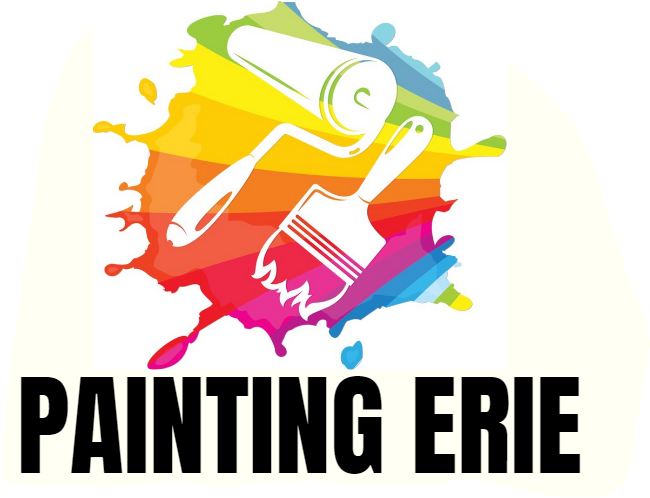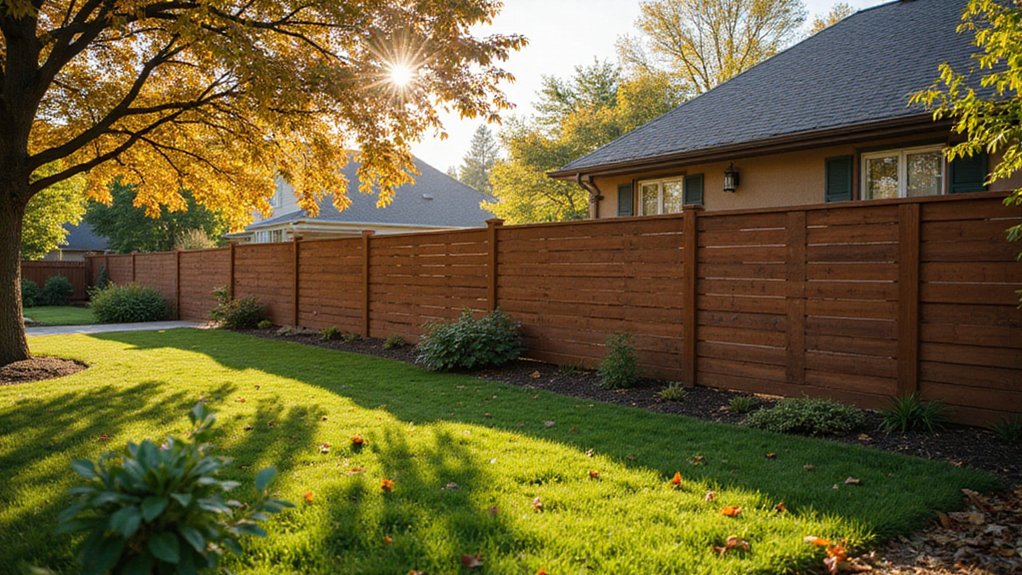As you consider the perfect fence color, remember it’s not just about personal preference – it’s about harmony with your home’s exterior. You want a hue that complements the roof, siding, and landscaping, creating a cohesive look that enhances curb appeal. Neutral shades like soft gray or creamy white provide a clean backdrop, while earthy tones like terracotta or sandy beige blend seamlessly with the outdoors. But what if you want to make a statement?
Neutral Nuances: Timeless Shades for Any Home Style
Since your home’s exterior is a reflection of your personal style, choosing the right fence color can be a crucial decision. Neutral shades can create a timeless look that complements any home style.
Classic neutrals like soft grays, creamy whites, and warm beiges provide a clean backdrop for your home’s architectural features, allowing its unique character to shine. By choosing a neutral fence color, you’ll create a sense of cohesion and balance, making your home’s exterior feel more put together.
Plus, subtle contrasts between the fence and your home’s exterior can add depth and visual interest. For example, a warm beige fence can beautifully complement a cool-toned stone facade. By selecting a neutral fence color, you’ll create a harmonious and inviting exterior that reflects your personal style. Additionally, just as interior painting can enhance a space, a well-chosen fence color can increase property value when paired with a thoughtfully designed exterior.
Earthy Tones: Bringing the Outdoors In
Earthy tones bring the natural world into your outdoor space, evoking feelings of serenity and connection to the environment. Warm earth tones, like terracotta, sienna, and sandy beige, create a sense of harmony between your home’s exterior and the surrounding scenery. These natural hues blend seamlessly with the outdoors, allowing your fence to become a subtle yet cohesive element in your yard’s design. Opting for these colors with a professional painting service ensures a durable, vibrant finish that enhances your property’s overall aesthetic value.
Bold Statements: Making a Lasting Impression
As you venture beyond the domain of earthy tones, you’ll uncover a world of bold statements that can raise your fence from a mere boundary to an engaging feature. Vibrant accents like bright red, electric blue, or sunshine yellow can add a pop of color to your exterior, creating a striking contrast with your home’s façade.
When selecting a bold hue, consider the style and era of your home, as well as the surrounding scenery. For a modern look, pair bold colors with clean lines and minimalist decor. For a more eclectic vibe, mix and match bold colors with natural textures like wood or stone.
Soft Pastels: Adding a Touch of Whimsy
While bold statements can make a lasting impression, soft pastels offer a subtler approach to adding visual interest to your fence. You can create a soothing simplicity by using soft pastel shades that blend seamlessly with your home’s exterior. These gentle hues won’t overpower your home’s features, but rather complement them with a charming contrast.
Soft pastel shades like pale pink, baby blue, or mint green can add a touch of whimsy to your fence without overwhelming the senses. When paired with neutral or earthy tones, soft pastels can create a beautiful harmony that ties your entire exterior design together. By incorporating soft pastels into your fence design, you’ll create a visually appealing and inviting exterior that makes you feel right at home.
Rich Jewel Tones: Elevating Your Home’s Sophistication
Rich jewel tones inject a level of sophistication and glamour into your fence design, instantly elevating your home’s exterior. These luxurious hues can add depth and dimension to your outdoor space, creating a sense of refinement and elegance.
Consider pairing rich jewel tones like emerald green or sapphire blue with vibrant gleaming metallics to create a striking contrast that draws the eye. Alternatively, you can opt for muted gradients that blend seamlessly with your home’s exterior, creating a cohesive and polished look.
To really make your fence stand out, try incorporating a mix of matte and glossy finishes to add texture and visual interest. With rich jewel tones, you can create a fence design that not only complements your home’s exterior but also makes a bold statement.
Monochromatic Magic: Creating Visual Harmony
Through the strategic use of a single hue, monochromatic magic can enhance your fence into a visually stunning element that harmonizes perfectly with your home’s exterior. By selecting a range of subtle contrasts within the same color family, you’ll create a cohesive composition that ties your fence to your home’s design. This technique allows you to add depth and visual interest without introducing competing colors.
For example, if your home’s exterior features a warm beige tone, you can choose a lighter or darker shade of beige for your fence, creating a sense of continuity. As a result, your fence will blend seamlessly with your home, creating a sense of belonging and cohesion. By embracing monochromatic magic, you’ll amplify your home’s curb appeal and create a beautiful, harmonious exterior that turns heads.
Nature-Inspired Hues: Blending With the Surroundings
As you gaze at your home’s exterior, the surrounding scenery can serve as a repository of inspiration for selecting the perfect fence color. Take note of the lush greenery, soil tones, and natural textures that surround your property.
Earthy shades like terracotta, sage, and moss can seamlessly blend with the surroundings, creating a harmonious visual flow. Consider the color of nearby foliage, trees, and flowers to choose a fence color that complements them. For instance, if your yard features a lot of evergreen trees, a deep green or blue-green fence color would tie in nicely.
Frequently Asked Questions
Can I Mix and Match Different Fence Colors for a Unique Look?
You can definitely mix and match different fence colors for a unique look, and it’s all about creating creative color combinations by blending complementary shades that harmonize with your home’s exterior, resulting in a visually appealing palette.
How Do I Choose a Fence Color That Complements My Roof’s Color?
When selecting a fence color, you’ll want to ponder how it complements your roof’s material and your home’s design style; for instance, a warm-toned roof pairs well with earthy fence hues, while a modern roof looks sleek with a crisp, white fence.
Are There Any Specific Color Rules for Historic or Vintage Homes?
When restoring a historic or vintage home, you’ll want to honor its original charm by selecting fence colors from traditional historic color palettes, which often feature earthy tones, and pairing them with traditional fencing materials like wood or metal.
Can I Use the Same Color for My Fence and Exterior Trim?
You can definitely use the same color for your fence and exterior trim, creating a cohesive look by matching fence and trim colors. However, don’t forget to coordinate fence and siding colors to guarantee a visually appealing exterior.
Do I Need to Consider My Neighbors’ Fence Colors When Choosing Mine?
When choosing your fence color, you’ll want to ponder the neighborhood aesthetic to avoid clashing with your neighbors’ fences, ensuring a harmonious visual flow and maintaining a sense of community cohesion that makes you feel proud to belong.

